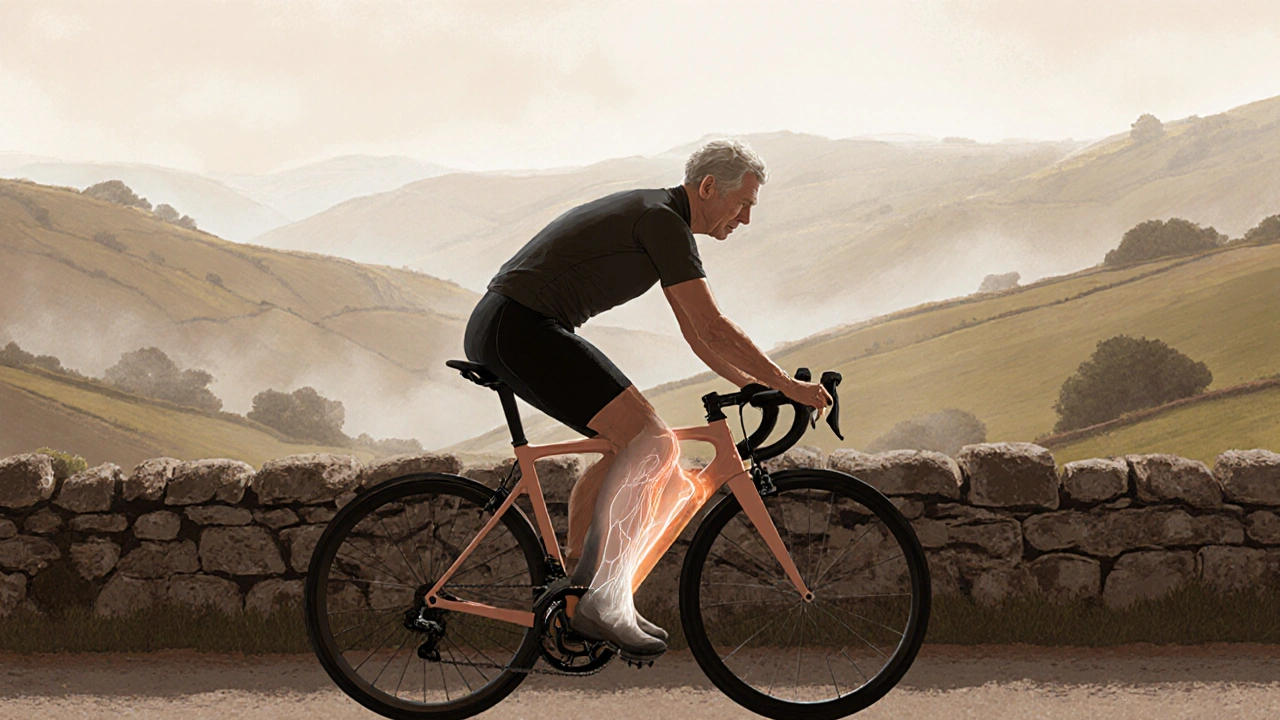Deep Tissue Massage Frequency Calculator
Discover how often you should schedule deep tissue massages for optimal results.
Ever felt like your muscles are holding you back from a better workout, a longer hike, or even a full night’s sleep? The answer often lies in the hidden knots and tight fascia that limit movement. deep tissue massage targets those problem areas, releasing tension and letting your body perform at its best.
- Understand what deep tissue massage actually does to your muscles and fascia.
- Learn the top five health benefits that can boost performance and recovery.
- Know exactly what to expect before, during, and after a session.
- Get a quick checklist for picking the right therapist.
- Find out when to skip a session and what DIY moves can keep the gains flowing.
What Is Deep Tissue Massage?
When people talk about Deep Tissue Massage is a therapeutic bodywork technique that applies firm pressure and slow strokes to reach deeper layers of muscle and connective tissue. It differs from lighter modalities by focusing on the muscle fibers and fascia to break down adhesions and improve tissue health.
How It Works: Anatomy Meets Technique
To grasp why deep tissue massage feels so effective, you need a quick look at three key structures:
- Muscle tension is the result of micro‑tears and chronic overload, often measured by reduced range of motion.
- Fascia is a thin, elastic sheath that surrounds muscles, bones, and nerves. When fascia becomes sticky, it limits mobility and can cause pain.
- Endorphin release occurs when pressure stimulates nerve endings, flooding the body with natural painkillers and mood boosters.
During a session, the therapist applies sustained pressure using elbows, forearms, or knuckles. This pressure increases blood circulation and lymphatic drainage, delivering oxygen and nutrients while whisking out metabolic waste. The combined effect is a reset button for both performance and recovery.
Top Five Benefits That Unlock Your Body’s Potential
- Pain Relief - By breaking down trigger points, deep tissue massage reduces chronic back, neck, and joint pain.
- Improved muscle recovery - Faster clearance of lactic acid means you can train more often without lingering soreness.
- Enhanced flexibility - Looser fascia translates to a wider range of motion for athletes and weekend warriors alike.
- Boosted circulatory health - Better blood flow supports heart health and helps regulate blood pressure.
- Stress reduction - The surge of endorphins leaves you calmer, improves sleep quality, and sharpens mental focus.
What to Expect During a Session
First‑timer nerves are normal, but knowing the flow can ease anxiety:
- Pre‑session chat: Your therapist will ask about injuries, activity level, and goals to tailor pressure.
- Warm‑up: Light strokes warm the skin and muscles, preparing deeper work.
- Deep work: Firm, slow strokes target problem zones for 5‑10 minutes each. Expect a “good‑pain” sensation; communicate if it’s too intense.
- Cool‑down: Gentle stretches and light pressure help the body assimilate the changes.
- Aftercare: Hydrate, stretch lightly, and consider a warm shower to flush out released toxins.

Choosing the Right Therapist
Not every hands‑on professional is created equal. Use this quick checklist:
- Licensed massage therapist (LMT) with at least 500 hours of training. \n
- Specialized certification in deep tissue techniques (e.g., SportsMassage, Myofascial Release).
- Positive client reviews that mention relief from chronic pain or improved athletic performance.
- Willingness to discuss pressure levels and adapt in real time.
- Clean, quiet environment with adjustable table height for comfort.
DIY Complementary Practices
Massage works best when paired with simple habits you can do at home:
- Foam rolling: Spend 5‑10 minutes on major muscle groups daily to keep fascia pliable.
- Dynamic stretching: Before workouts, use leg swings, arm circles, and torso twists to prime muscles.
- Hydration: Aim for 2‑3 liters of water per day; water helps transport nutrients released during massage.
- Post‑massage heat: A warm shower or heating pad for 10 minutes can amplify blood flow.
- Sleep hygiene: 7‑9 hours of quality sleep maximizes tissue repair.
When to Skip or Modify a Session
Deep tissue isn’t suitable for everyone at every moment. Avoid or tone down the treatment if you have:
- Acute inflammation, recent fractures, or open wounds.
- Severe varicose veins or deep‑vein thrombosis risk.
- Pregnancy beyond the first trimester without a therapist trained in prenatal massage.
- Skin infections, rashes, or fever.
In these cases, request a lighter approach such as Swedish massage or delay until the condition improves.
Deep Tissue vs. Other Massage Types
| Feature | Deep Tissue | Swedish | Sports |
|---|---|---|---|
| Primary Goal | Release chronic tension, treat injuries | Relaxation, circulation | Performance enhancement, injury prevention |
| Pressure Level | Firm, sustained | Light to medium | Variable, often sport‑specific |
| Typical Session Length | 60‑90minutes | 30‑60minutes | 45‑75minutes |
| Best For | Chronic pain, limited mobility | Stress relief, general wellness | Athletes, active individuals |
Quick Session Checklist
- Bring a list of current meds and health conditions.
- Wear comfortable, loose‑fitting clothing.
- Communicate pressure preferences early.
- Stay hydrated before and after.
- Plan 24‑48hours for gentle activity post‑massage.

Frequently Asked Questions
How often should I get a deep tissue massage?
For chronic pain sufferers, once a week for the first month can break down stubborn knots. Athletes often schedule a session every 2‑3 weeks to aid recovery without over‑stimulating tissue.
Will deep tissue massage hurt?
You’ll feel a firm pressure that can be uncomfortable, especially around trigger points, but it should never be sharp or debilitating. Speak up if the intensity spikes; the therapist can adjust.
Can deep tissue massage improve my athletic performance?
Yes. By increasing range of motion, reducing muscle tightness, and enhancing circulation, athletes often see better sprint times, higher lifts, and fewer injuries after regular sessions.
Is deep tissue massage safe for seniors?
When performed by a qualified therapist who adjusts pressure, it can help seniors maintain mobility and alleviate arthritis pain. Always disclose medical history first.
What should I do after a session to maximize benefits?
Drink plenty of water, do gentle stretching, and avoid intense workouts for a day. A hot shower or light yoga can further release remaining tension.


 Health and Wellness
Health and Wellness